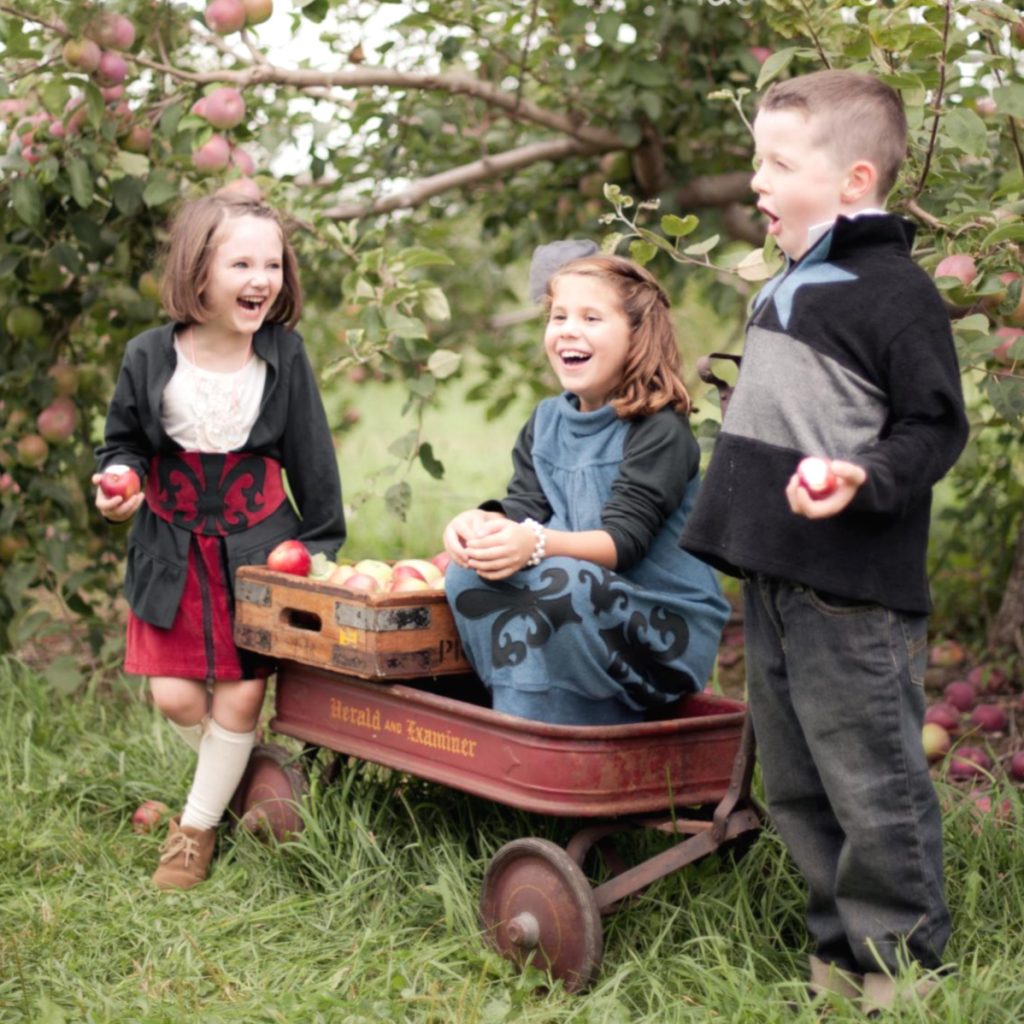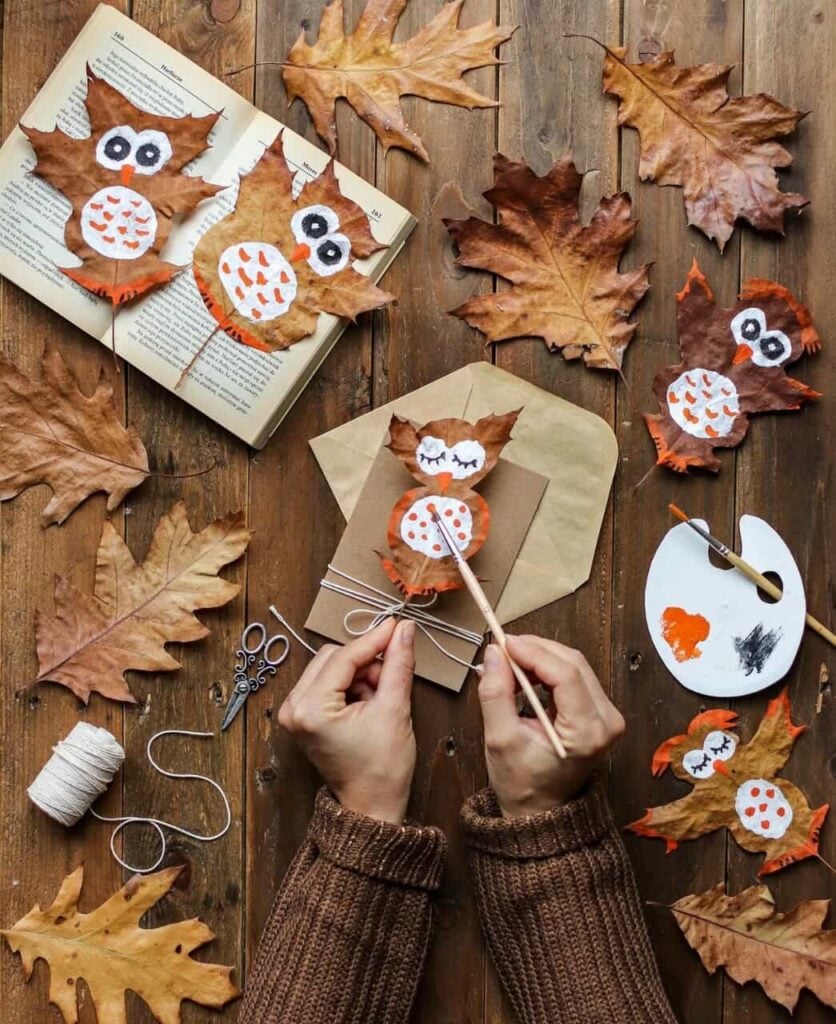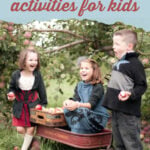How to Celebrate the First Day of Fall with Kids
Fall officially begins on Sunday, September 22, 2024. Here are games, DIY projects, rituals, books, and plenty of fun first day of Fall activities to meaningfully observe the autumnal equinox with kids.

We’re delighted to share these tips from Molly Westerman, PhD, on meaningful ways to celebrate the first day of Fall with kids.
I find myself ever more deeply aware of and affected by seasonal changes.
Light and darkness. Heat and – especially in my adopted state of Minnesota – cold.
Living farther north than ever before, I feel the changing daylight hours and temperatures in my bones.
From my first day of preschool until my early 30s, I observed the academic calendar’s rhythms and rituals. Now I share my days with a homeschooling eight-year-old and his two-year-old sibling.
First Day of Fall Activities
In response to these changes in our family rhythm, as well as the drama of northern winters, my family began celebrating the solstices and equinoxes. We also integrate these annual events into our homeschooling life, taking them up on their rich invitation to explore the seasons, ecology, and cultural traditions together.
The autumnal equinox (like the vernal equinox) is less showy than the summer and winter solstices. It is less intense, less extreme… a time of balance. Imagining ways to observe these quieter moments can be a challenge. After all, we’re accustomed to holidays that are aggressively advertised and loaded with expensive expectations. And yet, considered a bit more closely, the autumnal equinox proves rich with meaning.
On the autumnal equinox, the sun is at its zenith (it appears to be highest in our sky) over the Earth’s equator. The Earth’s axis tilts neither toward nor away from our sun, and the sun’s center is directly over the equator.
After the northern hemisphere’s autumnal equinox, the subsolar point—the point on our planet’s surface that’s directly underneath the sun—travels into the southern hemisphere, gradually casting us into shorter and cooler days.
Fall Brings Balance & Abundance
Our autumnal equinox occurs around September 22nd each year; the southern hemisphere’s takes place around March 20th (our spring equinox). On both equinoxes – all over the Earth – we experience roughly equal daytime and nighttime hours.
That all happens, of course, whether we take note of it or not. Beyond those basics, the autumnal equinox can be about scientific curiosity, cultural and family traditions, spirituality, or a mix of the three. Taking any of those approaches, the equinox can help us consider our place as humans in a vast, amazing world.
In many geographic locations and historical periods, harvest celebrations have been observed right around the equinox. Fall festivals and personal observances of the equinox often involve these themes:
- balancing opposites, especially the scientific, aesthetic, and symbolic senses of light and darkness in balance
- food, plenty, and gratitude
- building and celebrating community through sharing food and labor
- preparing for winter practically, emotionally, and spiritually
For some faiths, the solstices and equinoxes are important holidays. In these traditions, the autumnal equinox takes on several names, including Mabon, Harvest Home, and Alban Elfed.
People give thanks for the sunlight and the fruits of the earth, recognize that we must share those fruits as we enter the harsher months, and prepare to turn inward in the winter darkness, to which they pay their respects.
Wiccans honor the cycle of life as they reflect on the Goddess transitioning from Mother to Crone. One Mabon myth tells of the Sun King’s burial and the Goddess’s journey into the underworld in search of him—a tale that brings to mind Persephone’s season-changing journey to the underworld in Greek mythology.
Thanksgiving, the Moon Festival, Higan, Sukkot, and many other fall festivals also hit upon themes of light, darkness, change, plenty, gratitude, and community.
Celebrating the Autumnal Equinox with Children
Here are some favorite ways to celebrate the first day of fall. Most of these involve spending time outside in nature. Grab your weather-appropriate clothes and enjoy a crisp new season together!
Play the “How Tall is My Shadow?” game
My favorite hands-on activity for understanding the seasons involves a yard stick and a whole year. Around noon on each equinox or solstice (or on the closest sunny day), measure from your child’s toe to their shadow’s top.
Have the child measure your shadow, too, and record the numbers. After gathering data on all four holidays, you can ask your child to guess which shadow was longest, compare your shadows’ changing heights with your own heights…
- when did it come up to your knee?
- when was it about as tall as you?
- when would it be too tall to stand up in your living room?
Discuss the changing angles of the sun. Read up on our solar system and the Earth’s seasons, and experiment with a flashlight and a globe. This opens up so many conversations when you compare them, and it truly is a wonderful way to observe the autumnal equinox with kids.
Read Fall-themed books together
These picture books are great family read-alouds for the autumnal equinox.
- We Gather Together: Celebrating the Harvest Season (Wendy Pfeffer) introduces the science, history, and cultural traditions surrounding the autumnal equinox. This book also includes projects and recipes to try at home.
- It’s Fall! by Renee Kurilla offers gorgeous illustrations and highlights the season throughout Halloween and Thanksgiving.
- Pat Zietlow Miller’s Sophie’s Squash and Dahlov Ipcar’s Hardscrabble Harvest playfully bring our attention to the bountiful fall harvest we get to enjoy.
- The Little Yellow Leaf by Carin Berger is the charming story of one little leaf still holding on through fall as winter approaches.
- Grace Lin’s Thanking the Moon: Celebrating the Mid-Autumn Moon Festival, Deborah Heiligman’s Celebrate Thanksgiving, and many other excellent picture books explore different cultures’ autumn traditions.
Collect and identify autumn leaves
Colorful leaves are an obvious and festive jumping-off point for fall activities, if you have them this early in the season. Go on a walk, seeking out the most beautiful specimens in your neighborhood. Take a field guide with you and identify the trees that made your favorite leaves.
Even if you don’t have fall foliage at hand, you can learn about photosynthesis and plant cycles and enjoy picture books like Lois Ehlert’s Leaf Man.
Create leaf people or animals using the leaves you’ve gathered and pressed. These leaf owls by Shorena Ratiani make a fun inspiration!

Enjoy a locally-sourced meal
Prepare a feast of local foods together, focusing on the bounty of autumn. Read Harriet Ziefert’s By the Light of the Harvest Moon and throw a fall-themed dessert party. Or read Eden Ross Lipson’s Applesauce Season and make applesauce.
Visit a farm stand or farmers’ market. Host a potluck and celebrate the autumnal equinox with kids and adults. Toast the harvest, the farmers, and each other with delicious warm cider.
Look for signs of fall
When is the first day of Fall? This year it’s September 22nd, but signs of fall might begin earlier or later depending on where you live.
Grab a notebook and walk around your neighborhood together. Just getting out to enjoy nature is one of the best ways to appreciate the autumnal equinox with kids. Use these nature scavenger hunt ideas to find acorns, pinecones, leaves, and more.
How many signs of this new season can you find?
Looking forward, looking back
This observance can take place with your family or alone. On paper, out loud, or simply in your thoughts, reflect on these questions or others that suit you better:
- What are you thankful for, in this particular season of plenty?
- What would you like to carry with you into the darkness of the coming season?
- What are you happy to leave behind?
- At this time of a shifting balance, what would you like to change?
Perform an Autumn Equinox crystal ritual
Kids love crystals, and this ritual is a fun and symbolic way to honor the beginning of a new season.
Create a circle with their favorite crystals. Desert Jasper and Smoky Quartz are great for Fall. You can also add elements from Mother Nature, like leaves that have begun to change color. Once you’ve completed the circle, have your child sit in the center.
Have your child close their eyes and take three deep breaths. Explain how the Desert Jasper stones root us in the Earth and how the Smoky Quartz stones help us release anything that no longer serve as the new season arrives.
Then, set an intention for the season.
Sit in the circle for 11 minutes to embrace and celebrate the arrival of autumn. Explain that as you inhale, feel a warm, orange glow surround you. As you exhale, visualize anything that no longer serves you leaving the circle of warmth.
Place them inside your home on a windowsill as a reminder to stay motivated and action-oriented through the fall.
Prepare for winter
Make like the squirrels who are storing nuts for the cold months. Try canning, pickling, or other methods of storing up today’s bounty for tomorrow’s challenges. Store up some sunshine, warmth, and optimism for the winter, too.
Make and display art to remind yourselves that spring will indeed arrive. Talk about what you’re excited to do this winter. Reacquaint yourselves with your favorite your cold-weather clothes.



